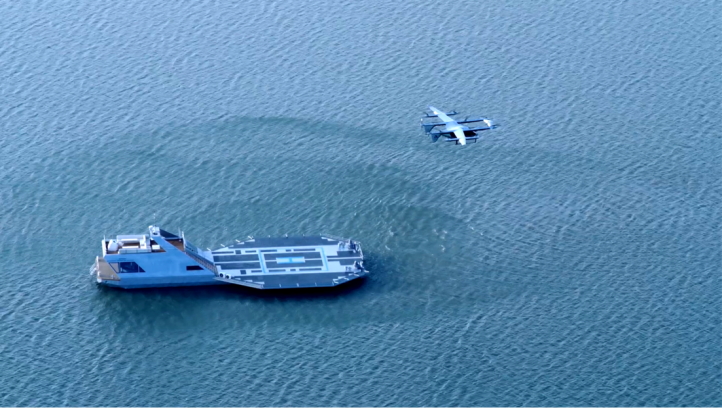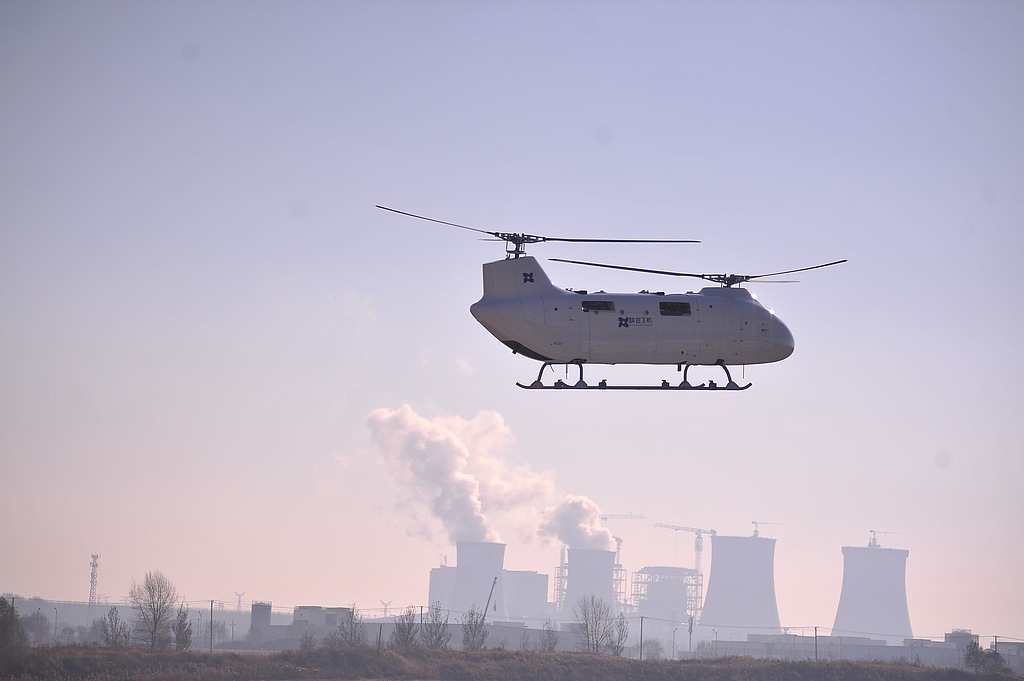
From "electric vehicles" to "electric society," extending "green transportation" to the entire land, sea, and air is one of the important explorations in the new energy industry mentioned in the latest public speech by Zeng Yuqun, Chairman and CEO of CATL (300750.SZ/03750.HK).
In short, CATL not only wants to deeply explore battery application scenarios on its "old ground" of land, but also wants to "go to the sky and into the sea," expanding the empowerment space of its technology and products from "one plane" to "three dimensions."
Such explorations are increasingly being implemented, with the latest key step focusing on the trillion-yuan emerging low-altitude economy. It is estimated that my country's low-altitude economy market size will reach 4 trillion yuan by 2035. However, the industry is currently in its early stages of development, and many constraints need to be addressed.
Many aspiring developers have already entered this field and are deeply involved. For CATL, a new energy battery giant, there is both a direct incentive to expand the application of its products to this emerging sector and a value-driven motivation to reshape the ecosystem of various industries, such as the low-altitude economy, and accelerate the broader and deeper empowerment of society by new energy technologies, as an industry leader.
The pioneering eVTOL seaplane airport is expected to accelerate the large-scale implementation of the low-altitude economy.
The global low-altitude economy is on the verge of explosive growth, and China, with its strong new energy vehicle industry chain and accumulated aviation technology, is rapidly becoming a technology innovator and market leader in the field of eVTOL (electric vertical takeoff and landing aircraft). However, the implementation of the low-altitude economy still faces several constraints. Among these, airspace supply is currently one of the industry's bottlenecks. CATL (Contemporary Amperex Technology Co., Limited) aims to tap into the "full-domain incremental growth" of the low-altitude economy, and its first step is to overcome the resistance posed by the "hard nut to crack" of airspace supply. Bypassing traditional industry thinking, CATL and its ecosystem company, Peakfly Aerospace Technology, are directly seeking space from water, extending low-altitude infrastructure to vast water areas.

The world's first "integrated sea-air low-altitude economic solution" combining "zero-carbon sea airport + eVTOL aircraft" was officially launched.
They launched the world's first zero-carbon seaplane airport designed specifically for eVTOL aircraft for the low-altitude economy industry. The spacious deck serves as a take-off and landing platform, while the cabins function as waiting areas and maintenance rooms, forming a flexibly deployable zero-carbon seaplane airport that shares data with eVTOL and collaborates intelligently.
In terms of energy and maintenance, the seaplane airport is an integrated photovoltaic, energy storage and charging system, driven by pure electric power and extended by solar energy. It is equipped with CATL's new generation of marine power batteries and supports eVTOL fast charging and all-weather operation.
"Turning ships into mobile airports, and filling the sea with flexible nodes capable of takeoff, landing, charging, and backup landing; combined with eVTOL and drones, we no longer rely on a few fixed airports, but instead lay out a network across vast waters." At the solution launch event, the relevant person in charge emphasized that, provided that regulations and safety standards are met, it possesses all the key elements of a minimum eVTOL airport. "In the eVTOL era, if takeoff and landing, power supply, command, and communication are all in place, it is already an airport."

Mobile airport clusters will create a super hub connecting sea, land, and air.
The launch of this zero-carbon seaplane airport signifies that CATL has provided the low-altitude economy with an integrated "sea-air" solution, consisting of a zero-carbon seaplane airport and eVTOL aircraft, equipped with a photovoltaic, energy storage, and charging system and an intelligent scheduling system. This solution not only addresses the industry pain points of traditional low-altitude infrastructure, such as "difficult site selection, slow deployment, and heavy operation and maintenance," but also significantly improves efficiency and reduces overall costs through flexible deployment in rivers, lakes, and seas.

A zero-carbon water airport will fill the gap in low-altitude smart infrastructure.
It is worth mentioning that, relying on the zero-carbon energy system, this solution can achieve "point-to-point, rapid direct access" in more scenarios. Its high feasibility makes it a new, replicable, and scalable paradigm for the large-scale application of low-altitude economy.
Overall, this "sea-air integrated" solution is expected to fill the gap in low-altitude smart infrastructure. "If this blueprint is gradually realized in the next 5-10 years, China will have the world's smartest, greenest, and most extensive low-altitude infrastructure network," the person in charge said. This infrastructure network will not only serve a single industry or a single city, "but also the expectations of an entire generation for safety, efficiency, and lifestyle."
He also admitted that "no single company can accomplish this alone; it requires the participation of the government, businesses, and industry partners."
What are the prospects for incremental applications as they expand from land areas to the entire domain?
As CATL emphasizes, only by expanding into more application scenarios can true "overall incremental growth" be achieved.

Reshape five core scenarios to build a blueprint for an "electric society".
What is the potential of the newly released "Sea-Air Integrated" low-altitude economic solution in practical application scenarios? In the current design, the "Sea-Air Integrated" low-altitude economic solution can meet the needs of different application scenarios such as marine energy platform operation and maintenance, high-frequency commuting, sea and air cultural tourism experience, emergency rescue, and mobile airport cluster operations.
The solution was also publicly demonstrated for the first time at the time of its recent release. A 2-ton eVTOL aircraft took off from a zero-carbon water airport on Dianshan Lake in Kunshan, Jiangsu Province, showcasing the collaborative operation capabilities of the zero-carbon airport and eVTOL. In addition, a multi-aircraft formation demonstration was conducted, with three 2-ton eVTOL aircraft flying in formation and successfully completing parachute drop missions and life raft deployments.
According to The Paper, the solution will enter a period of rapid promotion in the next 3-5 years, and it is expected that by 2030, the related business will cover major offshore wind farms, more than 50% of key ports and many coastal and riverine urban clusters in my country.
Taking the operation and maintenance of marine energy platforms as an example, offshore wind farms and offshore oil and gas platforms are usually far from land. Traditional operation and maintenance relies on ships traveling back and forth, which is time-consuming and subject to weather constraints. For example, for an offshore wind power booster station 50 kilometers offshore, the one-way journey by ship takes about 4 hours and is often delayed due to tides; the one-way journey for supplying materials to offshore drilling/oil production platforms can even take about 10 hours. Once a wind turbine fails and shuts down or the platform urgently needs parts, such a slow response often cannot meet production needs, and the economic losses during the "waiting for ships" process are huge.
According to reports, under the "sea-air integrated" solution, the setup of "eVTOL + offshore nodes" can significantly shorten arrival time. Actual tests show that eVTOL can reach a wind power platform 50 kilometers away in 16 minutes and an offshore oil and gas platform 150 kilometers away in 58 minutes, improving efficiency by more than 10 times. "The pre-positioned energy replenishment and backup landing points at sea improve availability, and with large-scale operation, the cost of single-trip maintenance decreases significantly."
For the general public, commuting needs are more readily apparent. Especially in coastal bay areas and island regions, many cities and islands are not far apart, but due to waterways, residents and tourists can only rely on ferries or detours by land, which is time-consuming and has limited service. Or even within the same city, the journey from the city center to the port or airport often seems "short but actually long," with traffic jams, queues, and transfers being common experiences.
In the future, we can imagine a possibility: deploying eVTOL (eVoice over Land) waterborne mobile platforms in suitable locations around islands or cities, providing rapid air transportation services via manned eVTOLs, reducing commuting time from "hours" to "minutes." Through infrastructure and network design, costs can be spread to a level close to that of daily commuting. When the cost of air travel drops to near business class or even high-speed rail fares, air commuting will become as natural as taking a taxi.
Of particular note is CATL's plan to build a vast and flexible network of vessels and eVTOL, which will move, combine, and distribute at sea according to seasons, projects, and even weather. In other words, when the task density in a certain area increases, more nodes can be temporarily deployed, and during the off-season, the capacity can be concentrated elsewhere. This flexibility is a feature that traditional infrastructure does not possess at all.
At the press conference, this application scenario was referred to as a mobile airport. In this network, instead of people seeking out infrastructure, the infrastructure proactively gravitates towards demand. The rational construction of this network plays a crucial role in the efficient, intelligent, and large-scale implementation of the "sea-air integration" solution in the future.
Zeng Yuqun previously emphasized that the ultimate mission of the new energy industry is to achieve zero carbon in the energy system, and the zero-carbon path will become the industry's "second growth curve." He pointed out that the new energy industry is currently standing at a new crossroads, moving from high speed to high quality, from partial breakthroughs to overall growth, and will usher in a broader and more systematic era of growth.

A world first, a new integrated sea and air model.
The launch of the "Sea and Air Integrated Low-Altitude Economic Solution" signifies that CATL's battery products are expanding from passenger cars, commercial vehicles, and electric ships to the low-altitude aviation field, and are expected to achieve large-scale application.
In fact, CATL, founded in 2011, has surpassed overseas giants in just six years, becoming the world's largest user of power batteries, and has maintained an absolute leading position in the industry globally for many years.
Exploring new avenues for the application of technology and products will offer CATL the opportunity to achieve a steeper growth curve. However, while growth is a natural outcome of this journey of exploration, "green empowerment" of various industries represents a far more profound significance and transformation.


